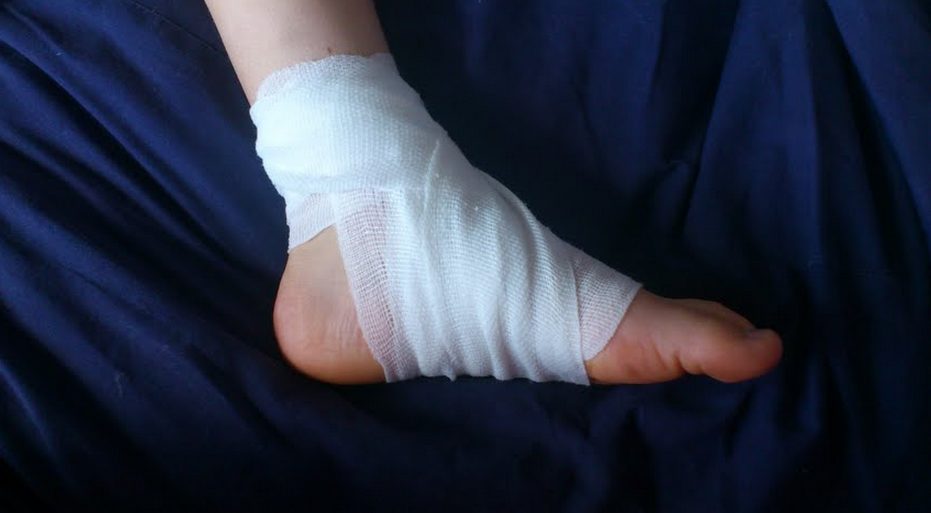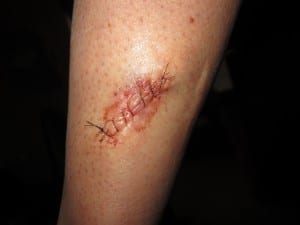 While Mohs surgery is usually the least invasive and most successful form of surgery to treat skin cancer, it still results in a wound that can be fairly large depending on the extent of the cancer. After the highly successful complete cancer removal rate, the skin is repaired and reconstructed to allow for optimal healing. Many patients discover, however, that wounds on the lower legs resolve slower and have a more difficult time healing after Mohs surgery than wounds in other locations of the body.
While Mohs surgery is usually the least invasive and most successful form of surgery to treat skin cancer, it still results in a wound that can be fairly large depending on the extent of the cancer. After the highly successful complete cancer removal rate, the skin is repaired and reconstructed to allow for optimal healing. Many patients discover, however, that wounds on the lower legs resolve slower and have a more difficult time healing after Mohs surgery than wounds in other locations of the body.
“There are a number of ways to close a wound on the skin after surgery,” says Dr. Adam Mamelak, board certified dermatologist and fellowship trained Mohs surgeon in Austin, Texas. “Whether it’s a flap, graft or direct closure, the idea is to select a method that will provide the best healing and cosmetic result.” Dr. Mamelak notes that there are some areas of the body, such as the lower leg, that are notorious for delayed healing and that are at increased risk of complications. This can ultimately delay recovery.
Wound healing is affected by a number of factors, and a major consideration is the location of the wound on the body. A wound on the lower extremities can exhibit a longer healing time as a result of the patient having poor circulation issues, arterial plaque buildup, or even diabetes. These conditions can lead to swelling of the legs and additional skin infections.
The key to wound healing is to make sure the wound is able to receive plenty of oxygenated blood. Compression stockings or wraps can help overcome many circulation issues and combat swelling of the legs. Add walking and calf exercises to the use of compression stockings, and you will increase circulation in the lower legs. You can also look into therapy through experts like Lively Wellness & Aesthetics – acoustic wave therapy. However, it is important to follow your surgeons wound care instructions carefully in the post operative period. “Too much activity, vigorous exercise and prolonged standing is often discouraged,” notes Dr. Mamelak. “I tell my patients to keep their legs up as much as possible when they are sitting and not walking around.”
Other ways to improve wound healing potential can be as simple as eating a healthy diet, drinking enough water, and getting exercise daily. Additionally, quitting smoking and properly managing other health conditions can aid in the body’s natural healing ability.
Proper techniques and treatments, appropriate medication and physician support are the best way to encourage lower leg wound healing following Mohs surgery. Rarely, a wound clinic that focuses solely on healing wounds can be consulted when the healing process has become slow and difficult.
